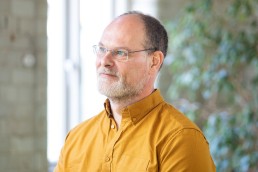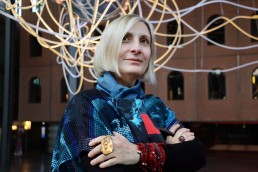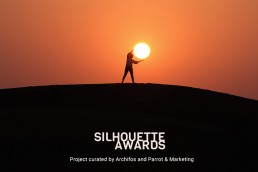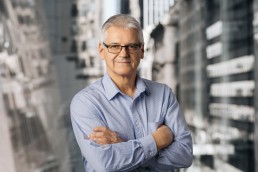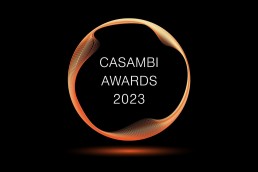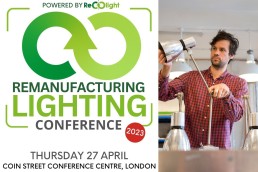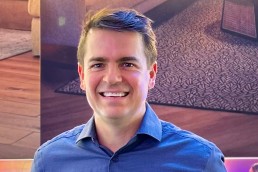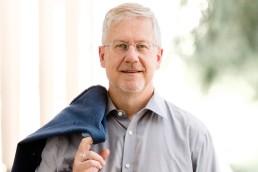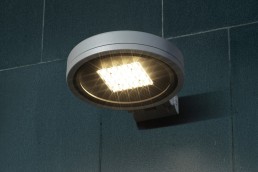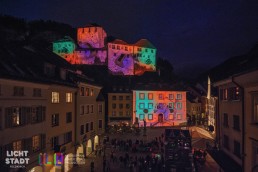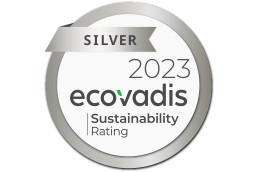Designers Mind: Goal Setting Mindset
Designers Mind contributor Kael Gillam looks at the concept of New Year’s resolutions, and the importance of giving yourself realistic, achievable goals.
Returning the office after the Christmas break can be a bit of a shock to the system for many. Slipping back into having a routine is no small effort, finding our feet after being able to shirk some of the rigidity that the usual Monday to Friday grind entails. Many of us also feel the pressure to set new goals and challenges for the year, running into those commitments headstrong while still finding our feet. Trying to plan out this much activity and change can make us more frustrated and anxious than it causes elation and excitement, but we are capable of flipping that narrative on its head and setting meaningful goals for ourselves.
A few years ago, Designer’s Mind had a roundtable discussion on Clubhouse about New Year’s resolutions and how really, on the whole, they’re a bit of a red herring. Committing to big change and expecting to be able to implement these new goals immediately can often be more discouraging and defeatist than making no change at all. Perhaps worst of all is the all-pervasive culture of comparison that comes with goal-setting; we feel ‘weak’ or ‘incapable’ when we see other people achieving the things that we want with what appears to be relative ease. We are, after all, creatures of habit, and forming new habits is not an all-or-nothing or immediately actionable venture, and some changes will inherently come more easily to different types of people. New Year’s resolutions often take the form of ‘I will start to do x every day of the week’ or ‘I will change the way I do x, starting tomorrow’. But how does that fit into the routine you’re just getting back into? What’s the time, money, or energy commitment to this goal, and how has it been factored into your current commitments?
Instead of an aggressive, all-or-nothing approach to improvement and/or change, it is best to start with introspecting about our own capacity and needs. What aspect of day-to-day life feels like it needs improvement, and what do I want to prioritise? What long-term goals do I have, and what change would make them easier to achieve, or more rewarding to achieve? This will vary for everyone, and our answers may vary from day to day. Our commitments to ourselves and to others are only able to be fulfilled when we feel that we have the internal resource and external support to do so. Big changes often feel like they require sacrifice, which is inherently detrimental to the ideal of improvement and betterment.
The goal, then, needs to become more intangible and flexible to best allow for our efforts to feel meaningful. For example, instead of a commitment like ‘I will get eight hours of sleep every night’, instead reframe the prompt to ‘I will create time for myself in the evening to be able to relax’. With this framework, if effort gets put into creating a comfortable environment to signal the physical and chemical needs of encouraging sleep, then it feels like a win. And when most attempts feel like a success, this encourages us to continue these learned behaviours and turn them into habits, ultimately guiding us to that quantifiable goal.
But, if tangible goals are more in line with your personal satisfaction, then creating a plan with milestones might be a good alternative. The ‘Couch to 5k’ scheme is a good example of incremental goal setting. If you’ve never run before, you cannot expect yourself to have the endurance or strength to achieve your end goal on day one. Instead, it is a balance of paces and distances to acclimate your body to the act of running. Like the sleep goal, you’re priming your body and mind to a new way of doing things in a patient and thoughtful way. You could also go down the ‘gamifying’ route (which we love here at DM) with wearable tech to track your movement and vitals. With this added layer of external support, you can start to be more conscientious of how your body feels throughout the day on your ‘active’ and ‘rest’ days.
Changing our habits and our lifestyle necessitates that we are kind to ourselves, and recognise that some days our goals simply won’t be achievable. By starting with incremental change, that is less rigidly measured, we inherently create a more forgiving and welcoming attitude around the change we want to accomplish. To add extra motivation, you can also involve friends and family in your goal setting, and have a shared accountability for your journey. External validation and encouragement during periods of change can be massively rewarding and spur us to stay true to our resolutions when we feel the care and support of those we hold dear.
We wish you all the best for the year ahead, and encourage you to create a space for wellness as part of your new routine.
Mark Ridler
After more than 40 years in lighting, Mark Ridler has stepped down as Head of Lighting at BDP, leaving the industry to take up a new role at the Spinal Injuries Association. Here, Ridler looks back on a stellar lighting career, and speculates what the future holds.
Late last year, Mark Ridler announced that he was stepping away from his position as Head of Lighting at BDP. After more than 40 years in the lighting industry, 19 of which at BDP, Ridler began 2023 taking up a new position as Director of Programmes at the Spinal Injuries Association.
The move marks a big transition for Ridler, but is a natural one considering his career-long ambition to create work with a strong ethical consideration and societal impact.
As with many in the lighting community, Ridler found the profession almost by accident, discovering theatrical lighting while studying Engineering at the University of Cambridge.
He recalled: “When at university, another student asked me whether I wanted to do a follow spot. I didn’t even know what one was. I’d just stopped rowing and was looking for something to do outside of studying and said yes. So, my first connection with light was very physical – actually holding and directing a light at a performer and looking at the impact it had on them and the audience. I fell in love.
“I was always split between being good at science and the arts. I had to make a choice for A Levels and pursued the sciences, but I was always hankering after the arts. I rejected pure science for engineering because it had a more direct impact on society. I abandoned engineering because at the time it had little or no ethical consideration – an ‘I make the bomb; I don’t use the bomb’ mentality. But here was a profession, lighting in theatre, that did have an ethical context, made a societal impact and also allowed me to combine science and art. It was utterly compelling, but it was a complete fluke that I found it.”
Following his studies, Ridler developed a successful career in theatrical lighting, a career that he said led to “doing increasingly bourgeois shows and evermore travelling”. However, after getting married and starting a family, he sought a change of lifestyle.
“Architectural lighting had intrigued me for a while with the advent of theatre lighting designers illuminating buildings, notably at the time the Lloyds and Hoover buildings,” he said.
“I was doing a lot of networking and met the likes of Janet Turner, Mark Major and Jonathan Speirs, and others. Maurice Brill was advertising at the time for a senior at MBLD; I applied and got the job. That was a very fast learning curve, but with the support of Rob Honeywill and Kevin Theobald, I made Associate.”
In 2003, Ridler was involved in a road traffic accident, which resulted in him becoming a T10 paraplegic, unable to walk. Following his accident, Ridler explained that he wasn’t able to return to MBLD but was instead offered a job at BDP by then Head of Lighting, Martin Lupton. Lupton had seen an IALD presentation delivered by Ridler about Finsbury Avenue Square – a particularly notable project in his career – and offered him a job as a senior. “The following summer I was moved up to Associate, a couple of years after that Director, and in 2010 when Martin left, Head of Lighting.”
With a background in theatrical lighting, Ridler explained his ambition when he first stepped into the world of architectural lighting: “Coming from theatre, where my work was available to small, paying audiences, it was to make the beauty and power of light available to the widest possible audience, free at the point of delivery.”
This approach led to Ridler preparing a paper for PLDC on the ethics of lighting. “Essentially, the ethos I proposed was that design needed to be centred around the desires and needs of our ultimate clients – all those that use, inhabit, and encounter our designs. It has been my guiding principle ever since,” he said.
Throughout his career, Ridler has worked across a broad range of sectors, from hospitality and retail to infrastructure, workspace, and more artistic installations. This wide variety has meant that he never wanted to specialise in one particular area. “There is delight and frustration in every sector, and learning that can be carried across each that drives creativity,” he said.
“If you are good at listening to clients and understanding their operational needs, then a lighting design is always about revealing the human form in an architectural envelope, facilitating a variety of activities and hopefully creating an atmosphere that complements or inspires that activity.”
Despite having an ethical guiding philosophy in his work, Ridler feels that he never developed a signature style or aesthetic. Instead, projects are “driven by the context, be it architectural, political, social, historic, environmental, etc”. As such, each project has a very different look and feel. This is an approach that he hoped to instil within the lighting design team at BDP as well. He continued: “I led BDP as a design collective where each designer’s voice has equal weight, irrespective of experience, based upon the quality of the ideas expressed.”
Across an impressive body of work, Ridler cites Finsbury Avenue Square as a project that “put me on the map and changed my life in many different ways”, but as for an overall favourite piece of work, he said it’s “like trying to choose your favourite child”.
“I’m going to nominate one of my last projects, which few of your readers will know because it hasn’t been photographed and publicised yet,” he added. “It is a disused warehouse in Glasgow that has been turned into an event space; it is clearly visible from across the water and adjacent train lines, and accessed by a new public square owned by Barclays.
“Designed with Tom Niven and Bojana Nikolic, the concept used ring of light techniques that Roger Deakins developed for film, combined with a complex colour play through a lattice of exposed rafters. Scenes are auto-generated from local climatic conditions and the whole thing is immersive and beautiful.
“Different designers come to concepts in many different ways. I’m still essentially a theatrical designer at heart. The process of having determined the available mounting positions, the look and feel is derived quickly and intuitively, and so it was with this one.”
Alongside his stellar design work, Ridler has throughout his career worked closely with organisations intent on driving positive change in the industry, from previous work with associations such as the ILP and PLDA, to more recently serving as a founding member of the GreenLight Alliance. This is something that Ridler believes ties back to his guiding ethos.
“Design has to be for everyone that encounters our design, which makes sustainability imperative,” he said. “Carbon is rightfully the concentration during a climate emergency, but it is the mass extinction event that human society is causing that should drive the circular economy, in my opinion. That, and resource depletion.
“I have always been collaborative by instinct, which is why I have devoted time to the ILP and PLDA in the past. The GreenLight Alliance is another example of how likeminded people can get together and make change.
“I think it is doing great work with tangible impacts, like TM66, but almost more importantly by influencing the culture within the industry. There is a long way to go, of course, but I haven’t seen a similar initiative achieve as much as this in such a short time.”
Over the course of his 40 years in lighting, Ridler has seen a number of advancements and changes across the industry – not just in terms of lighting technology, but in the way that we work. “The biggest change has to be mainly technology,” he said. “At the start of my time at MBLD, we had one computer, faxes, no email, and concept presentations were paper pictures cut out and stuck onto bits of board.
“Since 2003, there has been the explosion of the internet, social media, CAD to BIM, Adobe Photoshop and InDesign, the rise of video, communication over multiple platforms, mobile phones, Teams vs planes. So, everything to do with the production, distribution and exchange of design is faster – time for thought, planning, creativity, is at a premium, and I miss the widespread use of pencils.
“In lighting itself, the big change has been LED, of course. But control has also evolved, in particular into auto generation. Smaller, more discrete, lower energy, cooler, more precise optics, more control over the quality of light, but with the loss of the beauty and controllability of tungsten.”
As for further changes in the industry going forward, Ridler believes that the continued developments in technology, and in particular AI, could have a lasting effect. “I feel like a canal worker being asked that question [about the future of the industry] just at the beginning of the railways. We’ll still need to move goods, but it won’t be with horses and boats, it will be with trains and steam.
“While we do things at night, we will always need artificial light, but I don’t think anyone in the industry is quite understanding the impact that technology, and AI in particular, is going to have. Will there be such a thing as a lighting designer in 20 years? Perhaps not. Will the concept of professions survive? Again, I doubt it. And if they do, the way that we monetise design will be utterly disconnected from the human time spent in the means of production, as it is now.
“We need to have a much clearer sense of what humans are good at, as distinct from machines, and concentrate on those qualities. Those who laughed at me sticking pictures onto a board with glue 20 years ago should consider how pasting JPEGs onto electronic paper will look 20 years from now. Compiling a mood board from Pinterest is well within the grasp of machines, as is selecting luminaires and optimally placing them in a model through parametric design.
“Where the industry goes is outside of our control, but what I would like to see retained is elements of humanity, empathy, lateral thinking, intelligence, and ethics.”
From January of this year, Ridler has taken on a new position as Director of Programmes for the Spinal Injuries Association. An organisation close to his heart, the Spinal Injuries Association is a national charity that provides practical help to people who have been paralysed by spinal cord injury – its purpose is to be the expert, guiding voice for life after spinal cord injury, and it campaigns, educates and supports people affected, to show that an independent and fulfilled life is still achievable with paralysis.
Prior to joining the association full time, Ridler served on its board for four years, and also on an NHS board for the last two years. He explained what his new position as Director of Programmes will entail: “My role is to lead the delivery of all the frontline services and the charity’s communications and campaign activities.
“It will be a massive challenge working in a sector in which I have no operational experience. However, the skills I’ve developed in running a business, leading teams, project work, my knowledge of the NHS and lived experience, I hope, will qualify me to bring new perspectives to what is a strategically led, energetic, thriving organisation. There’s a lot to do and a lot to learn, but then that is exactly why I’m excited.”
Looking back on his time in lighting, Ridler is hopeful that he has left a positive mark on the industry. Speculating on what his legacy may be, he said: “My friend and colleague Colin Ball joked in my goodbye card that at first I will be missed, then blamed, and then forgotten, and I think that is right. Light is intrinsically ephemeral and that is one of its attractions, so my legacy, if there is one, surely will not be projects. It may be an ethos, some words spoken that live in a memory and perhaps passed on to another with a smile.”
After stepping down from his position at BDP, the lighting team there will now be led by Colin Ball and Tom Niven. And while Ridler is excited about his new opportunity, he described the decision to leave the lighting world as “bittersweet”.
“I have been working in light for 45 years, and to leave that is going to be hard. But of course, I’m not leaving light behind. I can’t,” he said. “I live in the Cambridgeshire countryside, and I’m surrounded by the changing seasons of light and a magnificent dark night sky. I still look up every time I enter a room.
“There is much in architecture, however, that I became tired of, and I feared I was becoming stale. I need a change and a challenge, and I couldn’t make that happen within BDP, so it was time to hand the baton to the next generation and do something else. The future is bright with Colin and Tom. They are both talented designers, and have very complementary skills. They have already grasped the opportunity and articulated a vision on growth and internationalism.”
While he hopes to still keep an eye on the goings on in the lighting world in the future, he offered some closing words of advice to the industry to which he has devoted 40 years of his life: “For all the troubles in the world – political, economic, environmental – we as designers have agency. We can make a difference. That should be a source of hope that is important, I think.
“On occasion, look up from the day-to-day challenges and realise and celebrate the work that we have done. As a profession, much of it is good, and it is important to be kind to ourselves and remember that at times.
“The world of lighting is special because it acts as a community. While we are in competition, there is a mutual respect, and in many cases in my experience, affection. If I am going to miss anything, it will be that.”
Grimanesa Amorós
Following the unveiling of her mammoth, 100ft artwork at Noor Riyadh, held in November of last year, arc speaks to Peruvian-American artist Grimanesa Amorós to learn more about her unique approach to light art.
Throughout her career, Peruvian-American interdisciplinary artist Grimanesa Amorós has been guided by her mantra of living in a “romance with the unknown.” It’s a philosophy that inspires her creativity and develops immersive works of art around the globe, each with a contemplation of the local cultural heritage and community. Most recently, Amorós created the enormous 100ft Amplexus (Latin for ‘embrace’) for the 2022 Noor Riyadh light art festival.
While her recent work has become characterised by the sprawling, undulating, interwoven lines of light, Amorós told arc that her love for creating began with a fascination for drawing when she was a child. “When I was 11-years-old, I loved maps,” she said. “That’s how I started, with the love and curiosity for maps, memorising and making these continental shapes, seeing such a vast world beyond my own. Drawing these distances from one point, from one continent to another, went beyond the straight lines we were taught to write on. My mother saw this fascination and, instead of drawing all over my walls, thought it an excellent idea to put me into painting classes. That is how it began, since then; I have never stopped.”
While her passion for creating began at an early age, it wasn’t until a trip to Iceland in 2001 that she unearthed the potential of light as a medium.
“I was lucky enough to see the Aurora Borealis, the Northern Lights, and it was breathtaking; I could not stop saying ‘wow,’” she said.
“I had my camera with me, and I could have become occupied with getting the right shot and angle, but I decided to put my camera down and live the moment. I thought, ‘if only I could share this with others, wouldn’t that be amazing?’
“I was fascinated by that Icelandic experience and began my adventure and relationship with light. I began trying to figure out how to encapsulate the ephemeral part of light into my work, experimenting with materials to try to emulate the light that left an extensive impression on me. I love light because it is not physical; we cannot own or have it.”
From here, Amorós focused on creating immersive works of light art that would replicate “those magical moments that I lived through in Iceland,” inspiring and immersing people in her work. Despite this, she doesn’t consider herself a “light artist,” but rather “an artist that uses light as a medium”.
“At this moment in my life, I communicate my work with others through light, but I started with painting and drawing, and then I worked with handmade paper. As an artist, I have kept evolving, learning, and looking for new challenges. How can I inspire myself and push people beyond the boundaries of their initial reaction? To produce and create, I must fuel myself, which I do through travel and connecting with new places, cultures, and people. Presently, light is the medium that helps me best express myself.”
While Amorós has had a lifelong interest in art, whether through painting or light art, during her studies, she had a brief dalliance with psychology, studying full-time at university while working on her art.
“I was studying during the day, then going home and painting until midnight, so it was quite an intense life,” she recalled. But it was another mantra that inspired her to focus fully on her art. “I always talk about LPP, which stands for Love, Passion, and Perseverance. I knew that I could never give up on being an artist – it was in my DNA, who I was and am. When I was 21, I had to decide where my life would go; either I pursue a career that I didn’t love or have passion for or focus on what my heart truly sought, to be an artist. I decided to be an artist and left psychology three months before graduating. As you can imagine, my father was not so happy, but I firmly believe we must follow our hearts and ambition. So, I left psychology and, with my two bags and many dreams, moved to New York City.”
However, while she left psychology behind to focus fully on her art, Amorós believes that her studies impacted how she approaches her work: “I believe that it helped me to be objective when creating,” she explained. “It allowed me to focus on not just creating my vision but a universal one. When you see the work that I did 20 years ago, it still looks current. You can’t put a time or date to it; psychology has helped me understand longevity and humanity.”
A core facet of Amorós’ approach is how her pieces sit within their surroundings and local cultures, especially given the global reach of her work. Amorós explained how she ensures that each installation is in keeping with its locale: “When a project commences, it begins with a conversation. Then, I do research and development – curiosity has always been a part of my being. I love learning about the architecture of a site, the country’s history, and the city. I like to know about the surrounding community. I do a very deep analysis and then ask myself, ‘how I can make a piece that will be challenging, different, and that will embrace the local community.’ I then sketch many drawings that interconnect and incorporate architecture, the viewer, and the piece.”
Within this approach, she has reached a unique artistic style, where each piece is instantly recognisable as a Grimanesa Amorós installation. Again, this came as the result of research and an examination of the wider art world. She explained: “As an artist, you must be informed about what is happening and be present. For instance, the goal is to find a visual language that represents you. You might think you’re creative and innovative, but then you discover somebody else is doing something similar. You have to stay fresh and create in a way that is defined as you.
“I think the general responsibility of an artist is to be very well informed. It is important to be in tune with yourself – what is your message? How do you want the viewer to approach your work? How could you do something different for humanity?”
Across her career, Amorós has created a vast array of installations and sculptures worldwide, varying greatly in size and scale. Looking back on her portfolio, she struggled to pick a landmark, or standout piece, instead believing that each work “has its moment.” “The most noteworthy is the latest, but each has an important place, they all have different attributes that make them stand out, but with each piece, we keep on evolving.”
In this instance, her latest piece, Amplexus, is one of her largest works. Spanning more than 100ft in size, the piece was commissioned for the 2022 Noor Riyadh festival, taking over the city’s Cultural Palace in the Diplomatic Quarter. As with previous works, Amorós sought to place the sculpture firmly within its environs, considering the local cultures and reflecting the city onto itself.
“Amplexus was located in The Cultural Palace, the heart of Riyadh’s global relationship; it’s in the Diplomatic Quarter, where all the embassies are located. I was trying to embody a global identity with the piece while communicating directly with Riyadh’s contemporary and historical architecture. The lighting sequence, however, was inspired by the surrounding desert, where dust storms and dunes can be seen. This directly inspired the undulation and colour changes within the light sequence.”
An integral part of any art installation is to trigger an emotional response in the viewer. Still, while Amorós also sees this as important, she prefers to create a more lasting resonance for her audience. She explained: “When I create a piece of artwork, I focus on making the viewer think. My goal is to have you take your time, as we all know time is precious, to be inquisitive and approach the piece, whether you are walking past it or seeing it in the distance; the aim is to engross and encourage you to come closer. I want to attract your attention and take your mind to creative places. This is very important to me because every viewer is different. Whether you’re a journalist, you’re in the art world, or you’re an individual drawn to the colours or the way the light is moving, there is something for everyone. As an artist, this is one of the driving forces of my work. This is why there is a statement with each piece. An artwork should provide both an emotional and logical response. The reason for its existence and what the artist wants to do with it will cause an emotional response. The logical part is pushing you to think, what is the medium? How was this created? The art piece should push you to question. Because as individuals, we are both emotional and logical.”
Along with upcoming installations in New York, Europe, and Riyadh, Amorós is keen to continue another aspect of her career, teaching and working with local communities. “I do a lot of community work and talks at universities and schools because everything starts when you’re young. I want to inspire the younger generations to see and think differently.”
As for the world of light art as a whole, there are a couple of avenues down which she would like to see the medium travel. “Moving forward, I would like to focus on immersive experiences beyond visual, possibly tactile, and audio. I’m interested in the collaborative process of working with others. It’s another way of learning and growing as a human being. Collaboration is working together without losing the essence of yourself, finding the balance between two entities.”
With this in mind, Amorós’ overarching ethos of “romance with the unknown” will continue to guide her and drive her forward. “Every time I go to a different site, everything is new. There is a new culture to learn from, new ideas, so the discovery within this keeps me aware and drives me to keep on evolving with my work; it’s a magic that also parallels with light,” she said.
“You must know what you want as an artist, like anything else. I know my goal: to make people think, inspire them to be more creative and be better humans, and then keep on evolving, never stopping. It’s like the light and water flow; it keeps going.”
Silhouette Awards to announce 2023 winners
(Online) - Following the success of its first year, the Silhouette Awards is shining a light on emerging talents within the lighting industry for a second year running. The winners of the 2022/23 awards will be announced during a virtual celebration on the 1st March at 3pm GMT, to honour the rising stars and discover the pairings of the 20 Silhouette Awards Mentees with their Mentors.
The Silhouette Awards was established to provide mentorship support to designers, celebrate the future talent of the lighting industry, and create a supportive platform for inspiration and growth. The far-reaching popularity of the awards is demonstrated by the vast number of entries that were received from candidates located in 26 countries across the globe, making this programme truly international. The renowned judging panel have independently reviewed the entries to select a final line-up of the best of the industry’s emerging talent.
The 22/23 Mentors are an esteemed panel of senior influential lighting designers: Amardeep M. Dugar, Arianna Ghezzi, Barbara Horton, Claudia Paz, Diana Galic, Beata Denton, Fay Greenhalgh, Florence Lam, Gary Thornton, Kristina Allison, Maida Hot, Martin Klaasen, Michael Callanchini, Nikita Agrawal, Olga Tuzova, Paul Traynor, Siddharth Mathur, Volker von Kardorff, Waleed Fakousa, and Yah Li Toh.
Once the winners are announced, successful candidates will be paired with and individually supported by one of the programme’s 20 mentors for the following six months and beyond, as the young professional’s progress in their careers.
With the support of the Silhouette Awards’ impressive array of sponsors and supporters, the winners will be rewarded with the opportunity to enhance their skillset, pursue their career ambitions, and add real value to the creativity of the industry, raising the bar for talent around the world. Core Sponsors for this year’s awards are: formalighting, GVA Lighting, LEDFlex Group and Vode Lighting, while the Light Sponsors are DiGidot Technologies, LED Luks and Sylvania Lighting.
Eve Gaut, Silhouette Awards Co-Founder, Parrot PR & Marketing commented: “We are thrilled that, following the overwhelming success of the launch of the Silhouette Awards, we are returning for a second year of nurturing young talent. We are immensely grateful for the support of our Sponsors, and to our Mentors who have dedicated their time to not only judging the awards but taking the following six months to inspire their Mentees and help their careers flourish. The winning mentees will receive much-deserved recognition and publicity for their achievements, and we are honoured to have created this ongoing supportive platform.”
Katia Kolovea, Silhouette Awards Co-Founder, Archifos, added: “We are so excited to see what’s in store for our mentees during this second year of the awards programme. Reflecting on the great success of the partnerships between our mentors and mentees from last year, the expectations are high. We are proud to have created a programme that allows mentors to nurture young talents, sponsors to connect and support further those individuals, and for everyone involved to build deep and long-term business relationships and friendships.”
The international lighting community is invited to join the virtual event on the 1st March at 3pm GMT to celebrate this momentous occasion by registering here.
ewo opens USA branch
(USA) – Italian lighting manufacturer ewo has established its presence in North America by opening its first subsidiary in the USA.
“The American lighting market is the biggest worldwide and offers incredible potential. At ewo, we are continuing our plans for expansion, and I believe it’s now an ideal time, as well as a natural next step, for us to grow our network and business overseas,” said Hannes Wohlgemuth, CEO of ewo.
ewo USA will be led by Juergen Boenisch – a renowned lighting expert that has worked in the North American exterior lighting industry for almost a decade. As President and CEO of ewo USA, Boenisch will bring a deep understanding of the North American market, as well as extensive experience in establishing and growing businesses. With its new location in the Boston area and a dedicated team, ewo USA is well positioned to provide cutting-edge lighting solutions across the United States and Canada.
Of the expansion, Boenisch said: “ewo has the instinct to quickly recognise new trends in this fast-paced market – ahead of time – and dedicates perfectionism to engineering while setting new standards. Moreover, it’s remarkable to observe their rigorous attention to the customer in creating an ideal and often very individual solution to their specific needs.”
Entries open for Casambi Awards 2023
(Worldwide) - The annual Casambi Awards celebrate the many innovative ways in which architectural lighting projects and products have deployed Casambi technology to life-enhancing effect.
Casambi’s technology provides lighting designers and manufacturers with the ability to wirelessly link devices together enabling the creation of customizable smart lighting networks. To date, more than four million Casambi Ready products have been sold worldwide. The technology has been specified in over 150,000 projects, spanning every application from small high-end residential to 10,000+ node industrial spaces.
The two special award categories, adjudicated by this year’s judges, are Best Product and Best Project. The jury is looking for exemplars of great lighting design and products built on big ideas, whether that's marking a sustainable step forward, taking lighting design in a totally new direction, or going the distance to deliver intelligent, “automagic” lighting control.
Last year, the award for Best Project went to the Panathenaic Stadium in Athens for its wireless lighting system. Ordered by the Hellenic Olympic Committee to protect the sacred building while significantly enhancing the venue’s sustainability claims, it comprises more than 3,600 LED bulbs, and features Casambi-enabled DT8 DALI Tunable White with an Electron Elegant Max custom lighting projection system. Luminaire manufacturer, Coelux, won Best Product with CoeLux HT25 Mini, an artificial skylight that introduces chromatic tuneability – reproducing the scenarios, colour, and light intensity of the sky across a clear day, from sunrise to sunset.
This year’s winning entries will hit the smarter, safer, greener trifecta yet also bring a touch of 'je ne sais quoi’ to the lighting game. It’s free to enter and the submission deadline is March 03, 2023. Winners will be announced at the Casambi Summit in April.
Adjudicated every year by a top-class international jury, the 2023 panel boasts a great breadth of expertise within the architecture and lighting professions with each member excelling in their field: Chris Lepine from Zaha Hadid Architects, Sebastian Aristotelis of SAGA Space Architects, Francesco Funari from Flos, Light Lab principal, Yah Li Toh, Cameron Girgus of Diode LED, and Aileen Herpell, co-founder of Aimotion.
Entering the Casambi Awards is a great opportunity to get your work in front of this fantastic panel, receive exposure for your innovations and connect with the 1000+ attendees expected at the Casambi Summit this spring. The prize also includes a dedicated feature in arc magazine, and the firm will include a Casambi demo cube set in the winners’ booty bags.
Everything you need to know can be found here.
Recolight to host Remanufacturing Lighting Conference
(UK) – As clients both in the corporate and public sector warm to the concept of reconditioned lights to achieve both sustainability goals and cost savings, Recolight are hosting a conference that will take attendees through the opportunities and challenges of remanufacturing lighting.
The one-day event will take place at the Coin Street Conference Centre in London on 27 April from 10.30 – 16.00.
Aimed at manufacturers, suppliers, and specifiers, the presentations will give delegates insights to help drive their businesses forward and ensure that they stay at the forefront of the sustainable lighting revolution.
The CPD-approved event will give visitors the tools, insights and contacts to make a success of luminaire reconditioning and reuse. Throughout the day, attendees will learn how to sell the concept of reconditioned lights, develop best practice policies, comply with the applicable standards, set up a testing regime for reused luminaires and remanufacture fittings at scale. The gathering will also provide inspiration from real world projects that prove the success of remanufacturing.
Speaking of the event, Nigel Harvey, Recolight CEO, said: “Recolight operates as a not-for-profit Compliance Scheme. We are on a mission to recycle less lighting, but to reuse far more. All too often, recycling is the easy option – but frequently it does not produce the best environmental outcomes. We are committed to working with our partners throughout the lighting industry to move towards a sustainable Circular Economy model.”
www.remanufacturinglightingconference.com
Signify appoints new CEO for UK&I
(UK) – Signify has appointed Nico van der Merwe as Chief Executive Officer for Signify UK and Ireland, the company has announced.
Van der Merwe joins the company from Schneider Electric, where he spent 15 years in various roles, most recently as Vice President for Home & Distribution UK&I.
With two decades of experience in international business and leading strategic business transformations, van der Merwe started his career in Sub-Saharan Africa, where he worked in sales, marketing and general management roles, before taking the position of Vice President Channel Development – Europe, based in France.
Throughout his international career, van der Merwe has demonstrated a track record of developing and implementing new business models and delivering sustainable results.
“I’m excited to join Signify as CEO of UK&I, and I look forward to working with the teams further to drive our lighting innovations in this dynamic market,” said van der Merwe. “Signify is a company with a rich heritage, a powerful product portfolio, a talented team, and a strong leadership position in sustainability. I am sure we are well positioned to further grow the business and industry while continuing to make a positive impact on society and the environment through our innovations. The UK and Ireland have exciting opportunities in the market for us and our customers.”
Lam Partners opens Washington DC studio
(USA) - Lam Partners, an architectural lighting design firm with offices in Cambridge, MA, Pittsburgh, PA, and now Washington DC, has announced that Chris Stroik has joined the firm as a principal and will lead the firm’s new DC Studio.
Stroik is a trained architect with more than 25 years of experience in lighting design - most recently as Founder and Principal of the DC-based, award-winning Stroik Lighting Design. His portfolio features many corporate, cultural, and institutional projects including Gallery 64, Rubell Museum DC, Catholic University’s Garvey Hall, Carnegie Endowment for International Peace, National Museum of American Diplomacy, and the Washington Metropolitan Area Transit Authority (WMATA) Virginia Headquarters.
Together, Stroik and Lam Partners will grow their architectural lighting design services in the greater Washington DC area, combining Stroik's experience in the cultural and institutional landscape with Lam’s extensive portfolio and collaborative design process.
This appointment follows a period of significant activity for Lam in DC, with an increasing number of projects currently underway. These include Georgetown University’s 55 H Street and Henle Student Housing, The Estate, 1333 New Hampshire Avenue, 1000 Maine Street, and 1900 N. Street, among others.
“It is truly an honor to be incorporated into Lam Partners. I’m excited to partner with a really diverse and talented group of like-minded people who have such breadth of vision,” Stroik explained.
“We are excited to welcome Chris to Lam Partners and to leverage his extensive project experience, along with his passion for collaboration and design excellence, as we continue to nurture and serve a growing client base in the greater Washington DC area,” added Lam Partners Principal Jamie Perry. “He’ll focus on driving growth through his strong relationships with key clients and consultants in DC and across the country, while working closely with the entire Lam team.”
Goccia Illuminazione - Proto
Proto is an aesthetic and eclectic round projector developed to give an answer to floodlighting with a demand for design. Orientable, on-surface or in combination with different poles, it features powers from 20 to 35W.
The wide range of lenses and optics makes the projector highly versatile for many applications, in public or residential areas, declined in its clear lines and in its resistant structure made of high-quality materials and finishes.
www.goccia.it
Lichtstadt becomes member of ILO
(Austria) - The Lichtstadt Association has been accepted as a member of the internationally recognised International Light Festivals Organisation (ILO).
The International Light Festivals Organisation (ILO) is an alliance of light festivals and experts who exchange expertise, inspiration and information on an international level and promote networking and mutual exchange.
By joining the ILO, the Lichtstadt Association hopes to raise awareness of its own programme of events, such as the light art festival Lichtstadt Feldkirch, and the smaller format Spotlight, promoting the Vorarlberg region at an international level.
“Through international exchange, we can observe and evaluate acute issues such as sustainability efforts or how to deal with energy shortages in the festival context and adapt them for our region,” said Dagmar Fuchs, Commercial Director of the Lichtstadt Association. “At the same time, members also benefit from the exchange of artistic positions and concepts.”
Sina Wagner, Artistic Director, added: "We are pleased to be able to expand our view beyond national borders in this professional environment and to keep our finger on the pulse, so that the programme can be diverse and exciting, surprising and spectacular.”
The next edition of the biennial Lichtstadt Feldkirch will take place from October 4-7, 2023.
www.lichtstadt.at
www.internationallightfestivals.org/ilo-members/lichtstadt-feldkirch
Tridonic awarded EcoVadis Silver medal
Tridonic has been awarded the EcoVadis Silver Medal for the first time in recognition of its EcoVadis rating for sustainability. This puts Tridonic in the top 25% of more than 100,000 EcoVadis rated companies worldwide.
With 68 points out of a 100, Tridonic was placed well above the industry average by rating agency EcoVadis, especially in the Environment category where it scored 90. Its overall rating places Tridonic in the top four percent of companies in the lighting industry. EcoVadis rates the sustainability performance of companies in more than 175 countries. The rating platform assesses the performance of companies in the Environment, Labour and Human Rights, Sustainable Procurement and Ethics themes.
Tridonic had its sustainability activities evaluated by this independent institute to increase transparency, meet the expectations of customers and partners, and identify potential for improvement.
“The EcoVadis Silver Medal is independent confirmation that validates our efforts and achievements on our path to sustainability. We are delighted to have received such a high rating the first time. We see this as an incentive to make further improvements in preparation for the next rating,” said Tridonic CEO Hugo Rohner.
This was the first time that Tridonic put itself forward for the sustainability assessment. The company was able to draw on a wide variety of sustainability activities that it has been implementing over many years. In August 2022 Tridonic was the first company in the electronics industry to be given the Cradle-to-Cradle Certified sustainability award in bronze for a lighting component. With its LED modules in the LLE, QLE and CLE product groups, Tridonic has met the strict requirements of the standard for recyclable and responsibly manufactured products. The company has bundled all its sustainability measures in the “Sustainable Tridonic” programme, which is part of the company’s target of achieving climate neutrality by 2025. Other aspects of the programme include the introduction of fully recyclable packaging materials by 2024 and certification according to the Cradle-to-Cradle Certified Product Standard for all premium products by 2030 at the latest.

